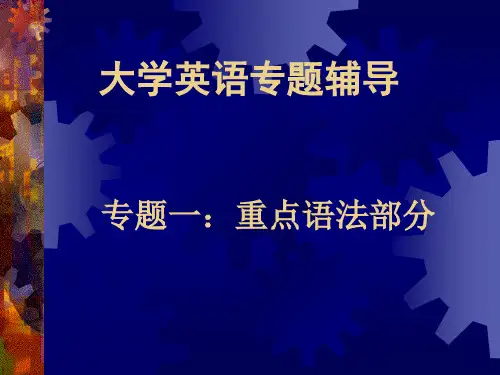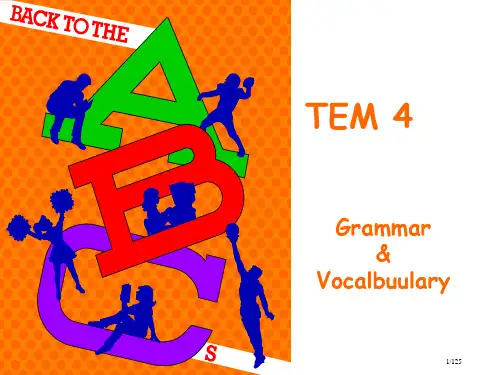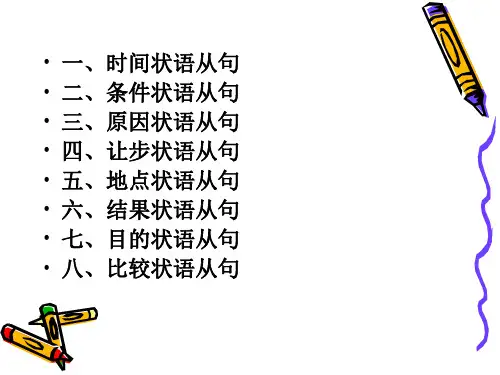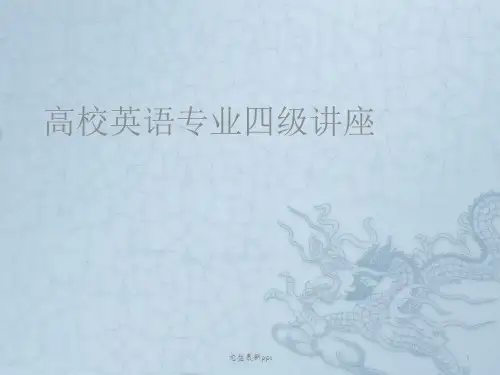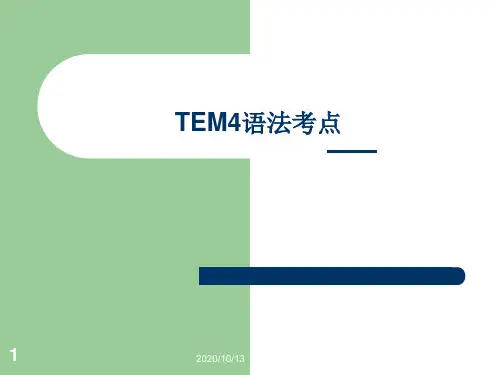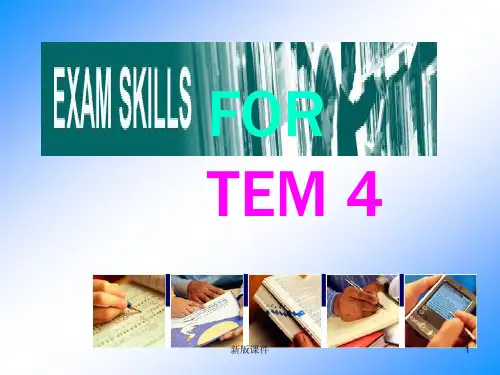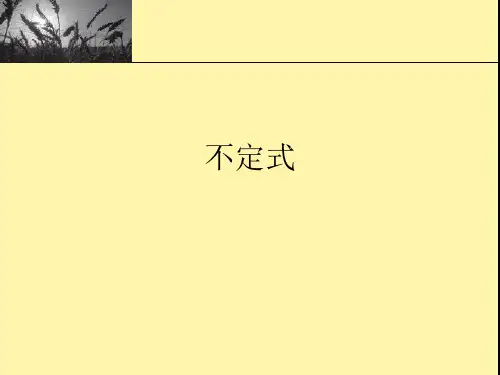• 2.习惯使用方法如:confess to/set about/be used to+doing; be supposed to/have/make sb.+do
• 3.由同一动词组成短语如:come,go,set,break • 4.单个动词,抽象名词,形容词和副词多以近义词、同义词形式出
• 5.介词短语在句中作状语如:in terms of;with the exception of; in vain等,另外还应注意rather than,other than,such as,none /nothing+but
16/125
A.2 识别记忆同音异形异义词
• bear(熊)———bare (裸露), been (be过去式)———bean(蚕豆), • meet———meat, blew (blow过去式)———blue, cellar—seller, • higher———hire (雇用), write———right ,bread———bred (breed
• 2、表示否定意义前缀 (1)纯否定意义前缀有in-,dis-,non-,un-等,表示“无,非,不”之意, informal(非正式),dishonest(不老实),non-effective(无效 力),uncomfortable.(不舒适)等。 (2)表示错误意义前缀有mis-,(误,恶),mal-(坏)等 mis-understand (误解),malediction(诽谤)等。 (3)表示相反动作前缀有dis-(否定,相反),de-(离开,除去),un-(不,无)等,
过去式), • dear———deer(鹿), fined (fine过去式)———find, • flour(面粉)———flower , hall———haul(拖,曳), fir(冷却)———

![最新[英语考试]英语专业四级考试 语法词汇知识幻灯片课件](https://uimg.taocdn.com/4b246e063186bceb18e8bbb7.webp)
